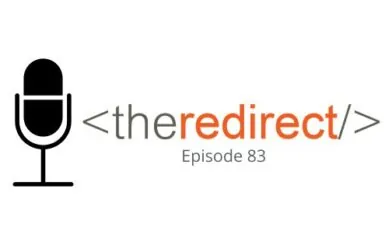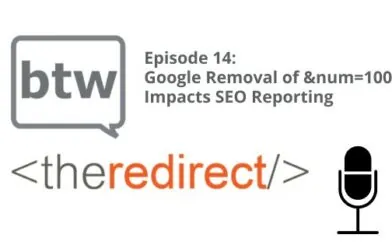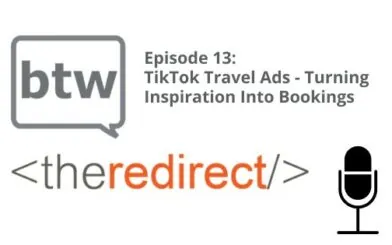Episode 21 / October 27, 2017
Listen Now:
In this episode of The Redirect Podcast, we discuss best practices for addressing old and updated site content, insights on what to do if you’re a victim of manual penalties by Google, and how to develop solid cornerstone content that serves your brand best.
Should You Remove or Archive Old Content?
Why this is even a question is beyond us. While we can understand removing content – or better yet, archiving content – out of concern it’s bloating the site and user experience, you don’t want to deliver a poor user experience with dead links or redirect loops, either.
The SEM Post addressed this in a recent article, recapping Gary Illyes’ response to the question at State of Search. When considering removing (or archiving) pages/posts/content, you first need to take a look at the history of those pages. Look at page analytics data. Are they generating traffic? If so, from what channels? Keep in mind that if you make those go away, that traffic goes away, too.
Potential Spam Issues with Changing Article Dates
It has long been a practice of many SEOs to simply update the publish/post date of a blog article in an effort to show search engines that it is fresh. In reality, this could be hurting you. Google knows if/when that article’s date was simply just updated, or if the content itself was updated and completely changed.
Another State of Search recap on The SEM Post warns against appearing spammy by frequently changing article dates.
Best practice is to follow a similar path as that of a journalist, where the most recent updates are placed at the top or bottom of the article. Much like with evergreen content, you might be inclined to update the publish date when updating for seasonality, when in reality you should just make the content updates, keep the publish date the same, and move forward. You’re not going to outsmart Google on this one.
Addressing Manual Penalties from Google
A recent Search Engine Land article summarized an SMX East presentation on manual penalties. These penalties are initiated when your site is found to be in violation of Google’s quality guidelines through manual review by Google’s quality control team. Manual actions result in your site being demoted in search results as “punishment” for low quality practices. The list of what those penalties could stem from is long, but it includes heavy spam-related and improper links, user generated content spam, unnatural linking, international linking, etc.
Site owners can find any manual penalties against their site in Google Search Console. When looking at the property, selecting “Manual Actions” under “Search Traffic” in the left menu. Once the issues are corrected, admins can then submit for review/removal of the penalty.
What is Cornerstone Content, and Why is it Important?
Cornerstone content is evergreen content that bolsters your company, brand, or product. Wordstream has published a great article cornerstone content. These pages on your site will help you build traffic and awareness and establish authority in your industry. Think of Moz’s Beginner’s Guide to SEO – that’s cornerstone content.
Cornerstone content is usually “top of funnel,” meaning visitors are still very much in the research phase, or at least aren’t looking to make a purchase, when they come across it. Don’t expect much conversion from this piece on its own. This doesn’t mean the content isn’t worthwhile for you; the goal is to create a touchpoint that is valuable to your visitors and leaves a strong impression, so they WILL choose you when they need to make a decision.
If you don’t currently have pieces on your site you’d consider to be cornerstone content, think about what that might be and take steps to get it out there. Do you need to create something brand new? Do your analytics suggest some existing pages or resources could serve in this capacity with a some improvements? (To get started on developing cornerstone pieces from existing content, check out this helpful article from Yoast.)
If you do have cornerstone content on your site, make sure you have a system in place for regular promotion and maintenance so it continues to serve you, and your visitors, well.
Thanks for tuning in! To catch future episodes of The Redirect Podcast, subscribe on Soundcloud, iTunes, or Stitcher.




